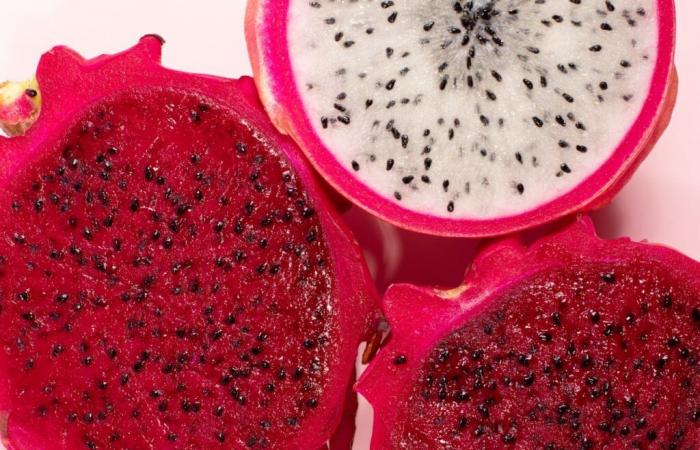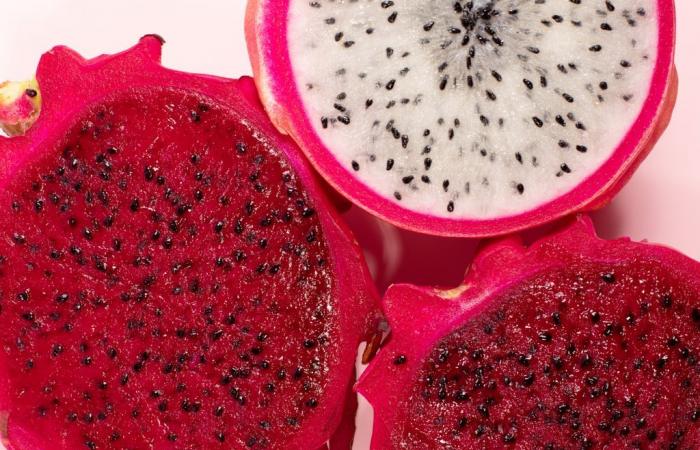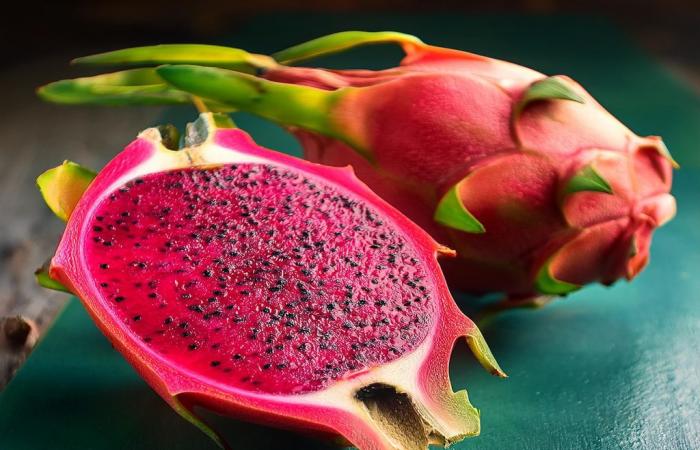Fruit growing is an area of great importance in Portugal, with demarcated regions of high interest for production. In 2023, according to the National Institute of Statistics (INE), the total area of permanent crops at the national level increased by 2.24% compared to 2021, reaching 761,932 hectares.
One of the regions where fruit growing is most important is theAlgarvewhich becomes attractive due to its favorable climate for the cultivation of certain exotic fruit species less water intensive, such as pitaya (Hylocereus sp.).
The pitaya is native to Central America and Mexico and several countries are investing heavily in its cultivation, including Brazil, Israel and China. Portugal is now taking its first steps in growing this fruit, which resembles a colorful pine cone, with a brightly colored exterior and spiny texture. The inside is white or red and filled with small black seeds. Its taste is comparable to that of watermelon, it is sweet and provides a feeling of freshness to those who consume it.
Amílcar Duarte is a teacher and researcher at the Mediterranean Institute for Agriculture, Environment and Development (MED) of the University of the Algarve. He holds a diploma in agronomy, a master’s degree in citriculture and a doctorate in agricultural sciences, specializing in fruit arboriculture. In 2022, he was tasked with coordinating the project « Dragon fruit: validation of the productive capacity of the red pitaya ».
This research, funded by the Common Agricultural Policy (CAP) through the Rural Development Program (PDR2020 in Portugal), within the framework of the Operational Groups, aimed to produce knowledge with a view to developing the pitahaya culture in Portugal. The objective was – and still is – to attract producers and increase the income of the poorest families living in rural areas.
Low water requirements
And everything seems to be going in this direction in our country, precisely in the Algarve region, because the irrigation requirements of this crop are relatively low, given that it is a cactaceous plant.
Amílcar Duarte, who coordinated this study with the support of PDR 2020 and set up an experimental field of 800 plants that are already bearing fruit, located in Cacela Velha, in the municipality of Vila Real de Santo António, has no doubt : “Pitaya cultivation is very suitable for the Algarve, given the region’s drought cycles. »
This experimental field in Cacela Velha houses a collection of 15 varieties in the open air and under glass, at the Mil Plantas nursery in Estoi, with the aim of characterizing growth, flowering and fruiting. At the same time, it is about adding to the existing information on culture, thus optimizing its development in the Algarve region.
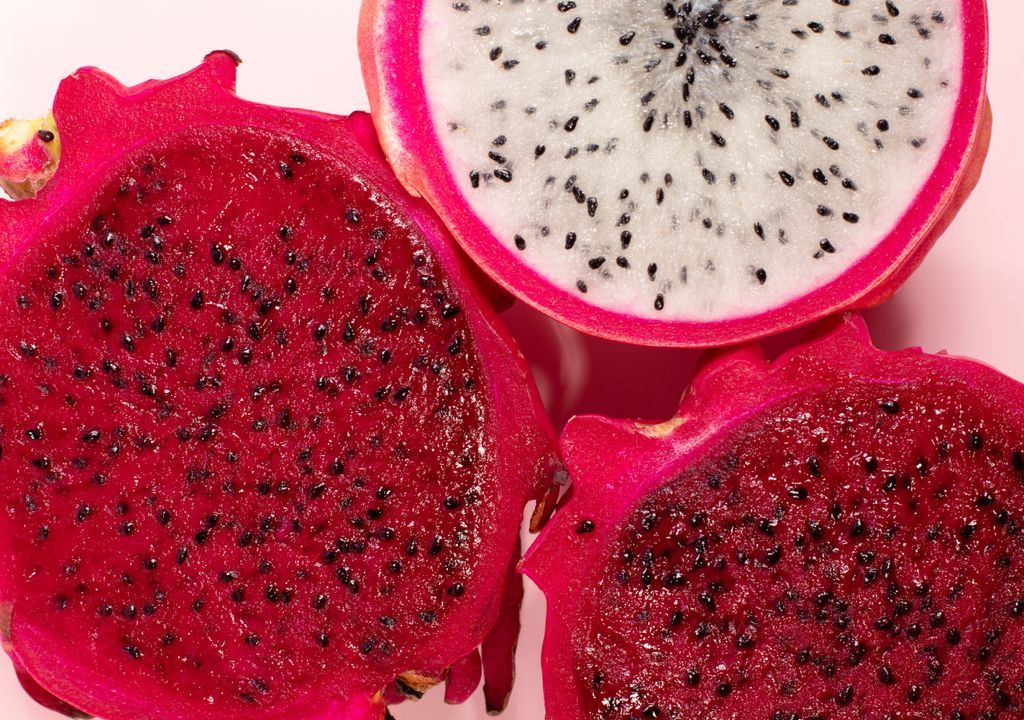
Although pitaya is resistant to long periods of drought and does not require much watering, certain conditions do not favor its cultivation in the Algarve region and were identified in the study carried out by the University of the Algarve. The scarcity of natural pollinators (bats, among other nocturnal pollinators) is an example of this, as well as temperatures that are too low in certain places or the intensity of solar radiation at certain times of the year.
Whatever the case, the economic potential of this culture seems indisputable. The pitaya is a hardy plant that adapts to dry conditions, which means watering costs are low and farmers are aware of this opportunity. On the other hand, it adapts to outdoor and greenhouse cultivation, in soil and substrate, the investment is low and the fruit is paid at a high price by consumers.
Eating pitaya helps you lose weight
The demand for pitaya is increasing among the population due to its health benefits. “It is a fruit with interesting nutritional characteristics that helps to lose weight, because it is low in calories, rich in fiber, vitamins and minerals,” explains the researcher from the University of the Algarve.
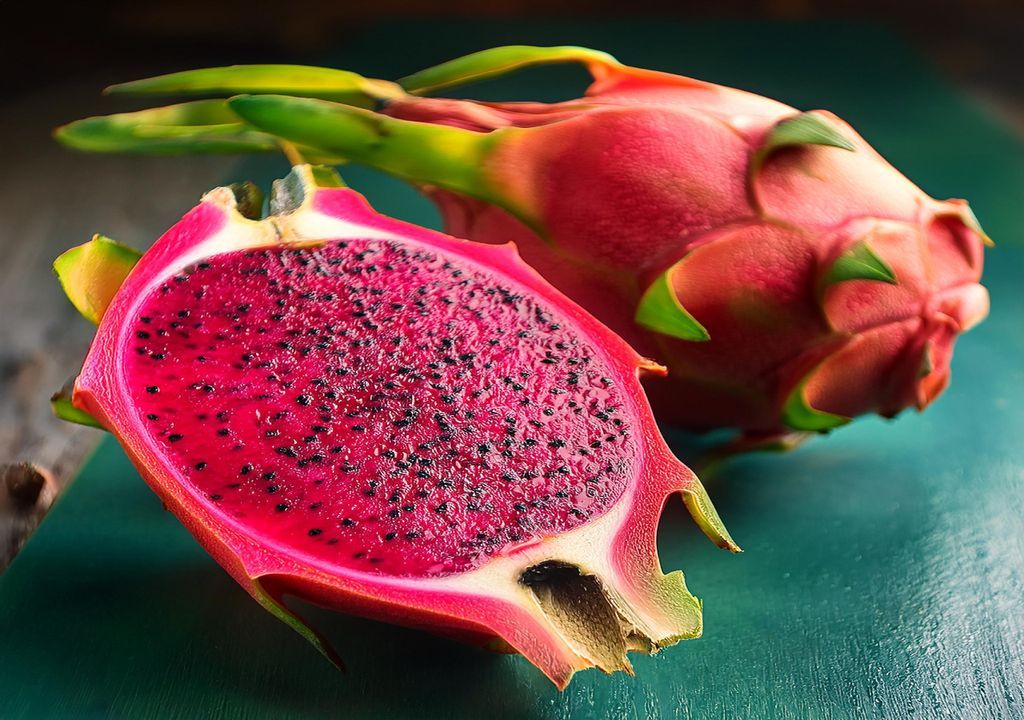
As part of the diversity of this fruit, whose flesh and skin have different colors, The study focuses on red pitaya with white flesh and pitaya with red and pink flesh. The objective is to determine which one or more are best suited to our country, as well as the cultivation technologies most appropriate under these conditions.
Additional income for families
This research project also aims to raise awareness of the plant and its fruit among farmers and the general public, while trying to understand how different species of pitaya adapt to climatic conditions, especially in the Algarve.
“We are following the experience of several pioneer producers of this crop in Portugal and Spain, and we are carrying out outdoor and greenhouse trials to determine the soil types to which it best adapts, as well as the cultivation methods the most appropriate,” explains Amílcar Duarte.
Research carried out at the University of the Algarve also aim to determine irrigation and fertilization needs, knowing that “water needs are relatively low, because it is a cactaceous plant, which makes the cultivation of pitaya very suitable for the Algarve, given the drought cycles of the region.
The development of knowledge and technology for the cultivation of this plant will allow some farmers to start cultivating it and obtain additional income,” hopes Amílcar Duarte. He also hopes that, “due to labor requirements, this crop will be especially recommended for small family farms.”
Ce agricultural research project is part of the sustainable development goals United Nationsbecause it is a crop considered sustainable, with low water requirements, which helps to save this resource.
As a viable agricultural crop on small farms, it can also help to “eradicate poverty” in the regions where it is installed, by increasing the income of the poorest families living in rural areas.

